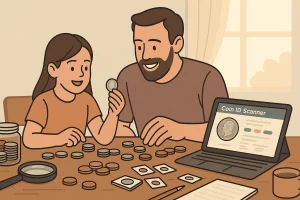Historical Context of Coinage in Revolutionary Times
Revolution Rarely Waits for Perfect Change
When revolutions spark, the roar of rebellion doesn’t pause for economic certainty. Imagine it—streets alive with fervor, ideals swelling louder than cannons, yet even in this chaos, there exists an unsung hero: the humble coin. During revolutionary times, coinage wasn’t just currency; it was a declaration, a manifesto pressed into metal.
In the American Revolution, for example, settlers faced an audacious challenge—how do you fund independence when your treasury is hollow? The colonies turned to “Continental Currency,” paper notes, but their value plunged quickly as trust in them wavered. Meanwhile, coins bearing the face of King George III still rattled in rebel pockets—a reminder of the oppressor they fought against. Can you feel the tension in that? Money symbolizing the very tyranny they sought to overthrow.
Coins Tell Stories of Bold Beginnings
Revolutionary coinage became a canvas for defiance and hope. Take France during the 1790s:
- New coins marked the fall of monarchy, replacing royal insignias with symbols of liberty, like the Phrygian cap.
- Designs celebrated citizens, not rulers, showcasing equality and unity, ideals desperately needed in turbulent times.
Each coin minted in these eras was more than a means of trade—it held the heartbeat of change.
Symbolism and Propaganda Associated with Revolutionary Coinage
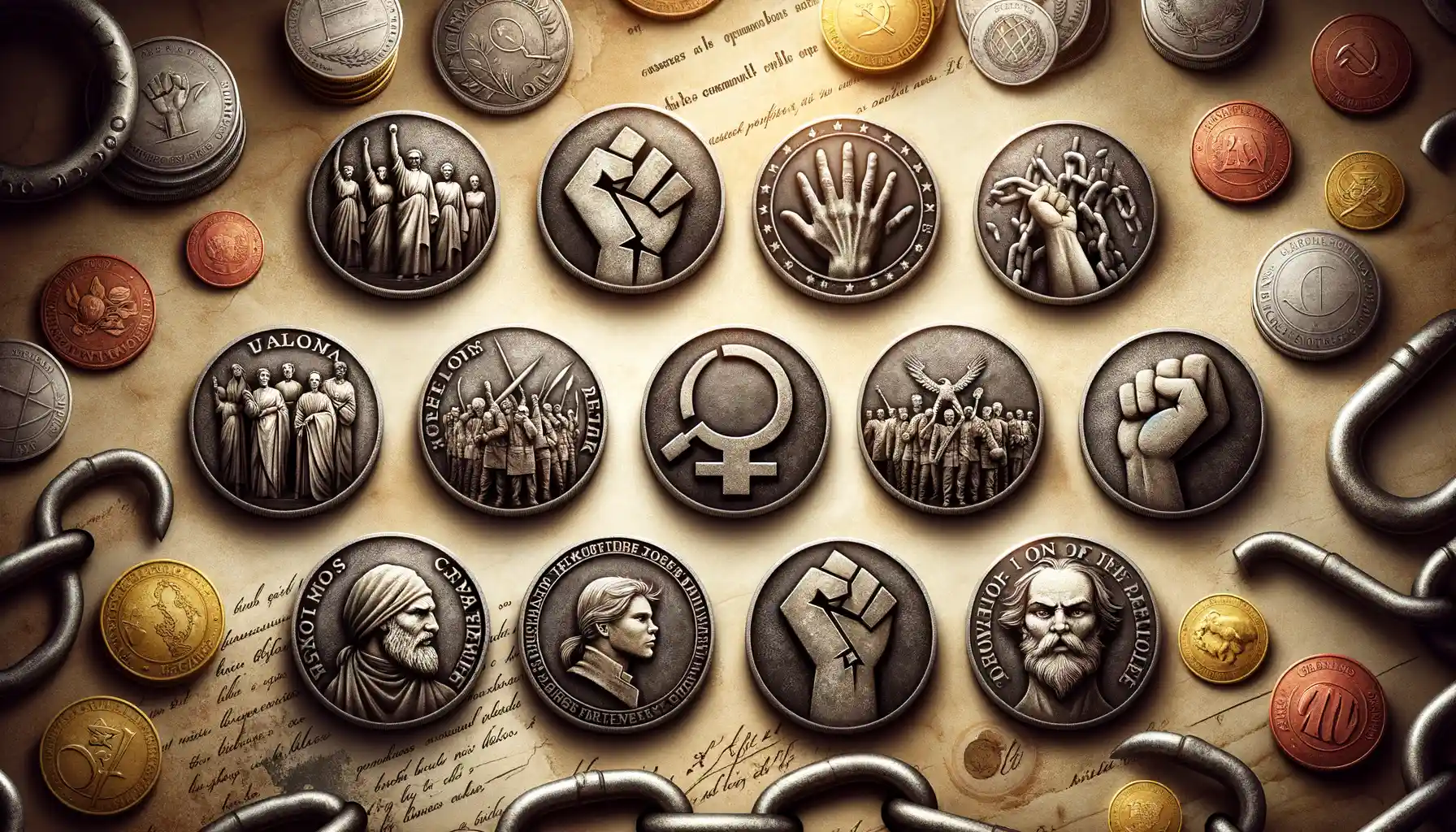
The Power of Imagery in Revolutionary Coins
Coins minted during revolutionary movements are rarely just about currency; they are mini billboards, striking symbols of defiance and hope. Think of these coins as little metallic messengers, clinking their way into pockets and whispering stories of rebellion with every transaction. Revolutionary coins often reject the imagery of toppled rulers—no more kings or emperors! Instead, they roar with depictions of freedom, equality, and new beginnings.
Many of these coins blossom with bold designs:
- Liberty caps, reminiscent of ancient Rome, declaring freedom from tyranny.
- Shaking hands as a universal emblem of unity and solidarity.
- Wheat sheaves or hammers, glorifying the labor and backbone of the people.
Each design choice is soaked in meaning. A coin isn’t just a currency; it’s a manifesto you carry around.
Propaganda in Your Palm
Now imagine receiving a shiny new coin stamped not with the face of a king but with the words “Equality for All.” That’s not just spare change—that’s emotional artillery! Revolutionary leaders used coins to plant ideologies into the collective consciousness. A copper coin might bear a clenched fist, an unmistakable symbol of resistance. Silver pieces could showcase rising suns, promising brighter days ahead.
These coins weren’t just currency; they were recruitment posters on metal, inspiring action, fostering identity, and uniting communities under a shared vision. They jingled in protestors’ hands, funding revolts and carrying revolutionary fervor into market stalls and taverns alike. The weight of such coins wasn’t just physical—it was ideological.
Economic Implications of Coinage During Revolutions
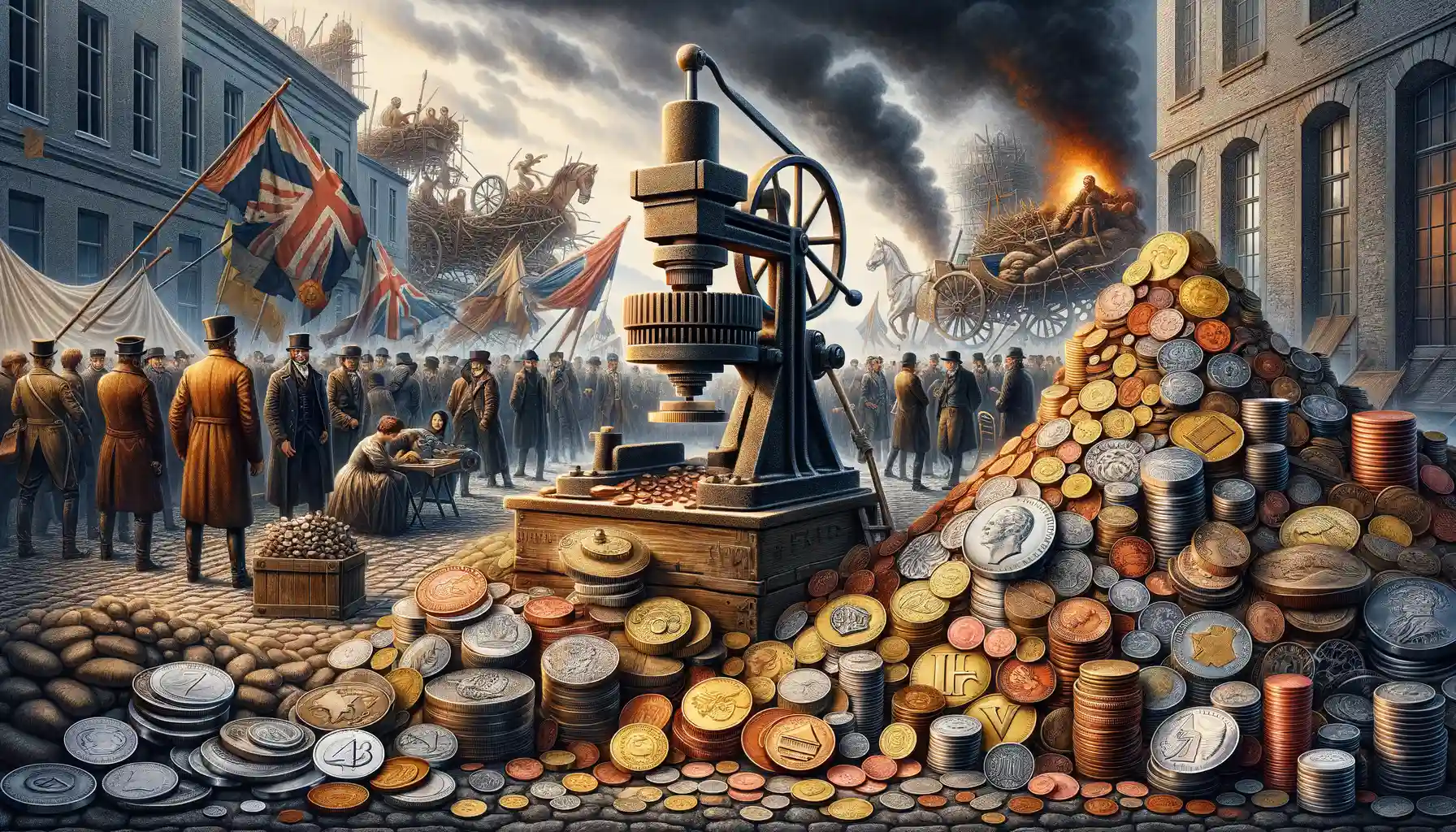
The Ripple Effect of Revolutionary Coinage
Picture the chaos of a revolution: people in upheaval, systems crumbling, and currencies being toppled like chess pieces. In such turbulent times, coinage often becomes more than just money—it turns into an economic battleground. The issuance of revolutionary coinage could spark waves that stretched far beyond its face value.
What happens when a regime decides to print its rebellion into metal? For one, it shakes trust in existing financial systems. Citizens might suddenly find their longstanding coins—engraved with the monarch’s profile or imperial slogans—declared worthless. On the other hand, shiny new coins, minted by the revolutionaries, attempt to win hearts and wallets. But here’s the gamble: will people accept them in markets? Or will they hoard old currency, fearing instability?
- Trade disruptions: When trust in currency erodes, barter systems might creep back, making daily transactions murky at best.
- Inflation’s specter: Too many coins minted quickly? Prices spike, and the economy gasps for air.
The metal itself wasn’t immune to debate. Oftentimes, silver or gold was melted down from confiscated church treasures or aristocratic stockpiles—a bold, almost poetic act showcasing wealth redistribution.
Technological and Design Innovations in Revolutionary Coinage
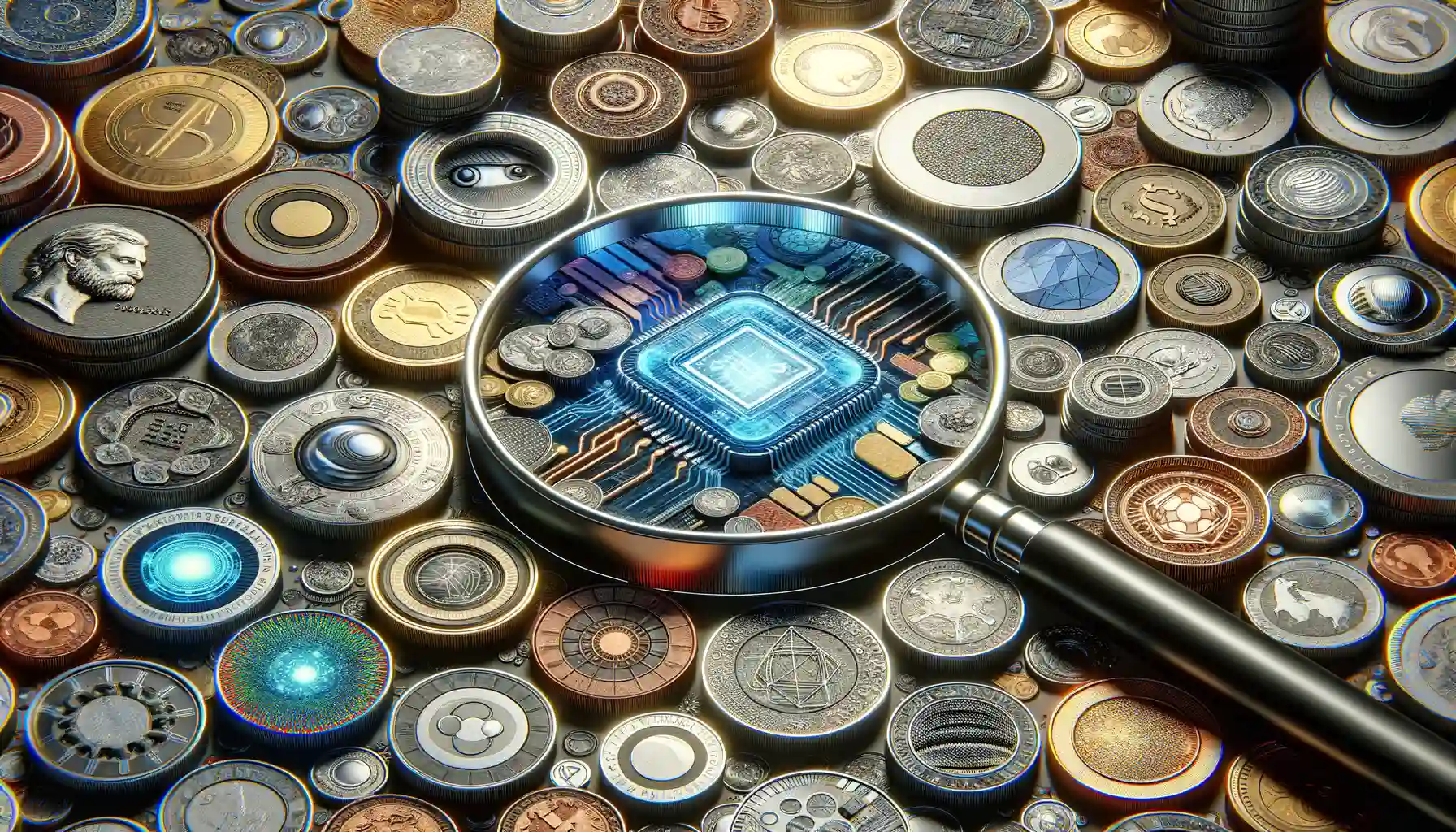
Forging Progress: The Craftsmanship Behind Revolutionary Coinage
Revolutionary coinage wasn’t just money; it was a daring blend of artistry and technological wizardry. Picture the tools and techniques of the time—hand-engraved dies, sweating artisans, and experimental presses, all working to produce a token that carried more weight than gold. These coins had a voice, whispering defiance and shouting identity. But how did these bold symbols come to life?
The introduction of steam-powered minting machines, for example, was a game changer. Think of it like upgrading from a horse-drawn carriage to a bullet train—suddenly, coins could be produced faster, with razor-sharp precision. Pair this with innovations in metallurgy, such as mixing alloys for durability, and you had coins that could stand the test of both wars and wallets.
- Laser-sharp lettering on edges for anti-counterfeiting.
- Relief designs bringing vivid national heroes or revolutionary emblems to life.
- Hidden markings—early, clever attempts at security coding.
Design, too, took daring leaps. Bold imagery like broken chains or rays of rising suns inspired hope. Each piece encapsulated a movement’s spirit, its goals etched permanently into metal. Holding one of these coins was like carrying revolution in your pocket.
Legacy and Influence of Coinage in Modern Revolutionary Narratives
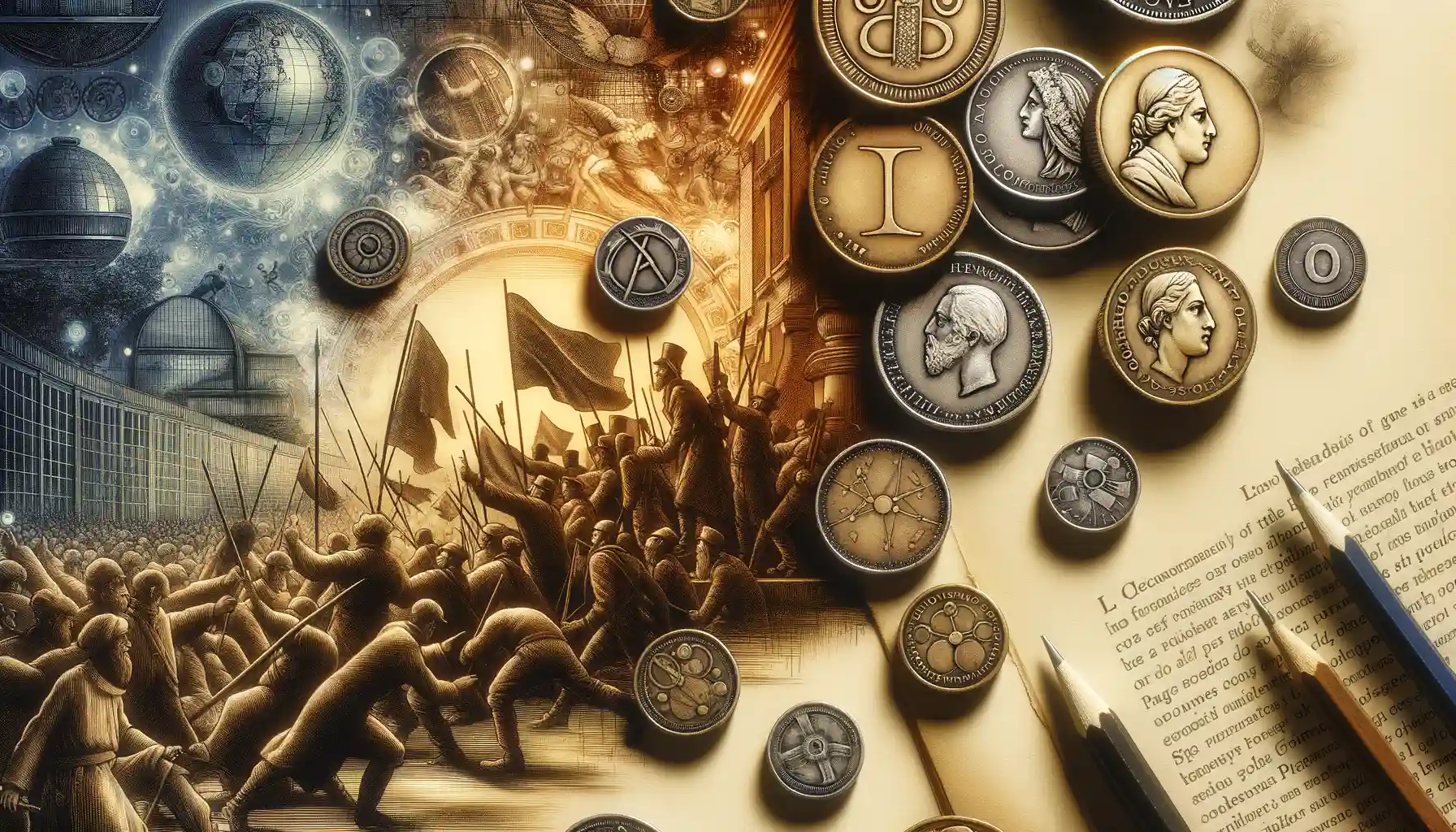
The Currency of Ideals: How Coinage Inspires Modern Struggles
Revolutionary coinage isn’t just metal stamped with ideals; it’s a whisper from the past, a tangible link to moments of radical change. Fast-forward to today, and these coins have evolved into symbols that ignite modern revolutionary narratives. In some ways, they’ve become the spark that lights the fire for activists, artists, and storytellers alike.
Do you remember the iconic imagery of the Liberty Cap? That symbol, etched on coins during the French and American revolutions, now appears in digital art, protest banners, and even tattoos. It’s as if these designs carry the rebellious DNA of struggles long gone, reminding us that revolutions—both then and now—are about ordinary people daring to dream big.
- In pop culture, revolutionary coinage inspires dystopian stories—think the “Mockingjay Pin” in *The Hunger Games*, echoing defiance like old-world emblems.
- Modern social movements borrow this currency of rebellion, using tokens or blockchain equivalents as protest tools or fundraisers.
There’s poetry in how something so small—a coin—can ripple through centuries, fueling not just economies but ideas, identities, and insurrections in ways we’re still discovering.

